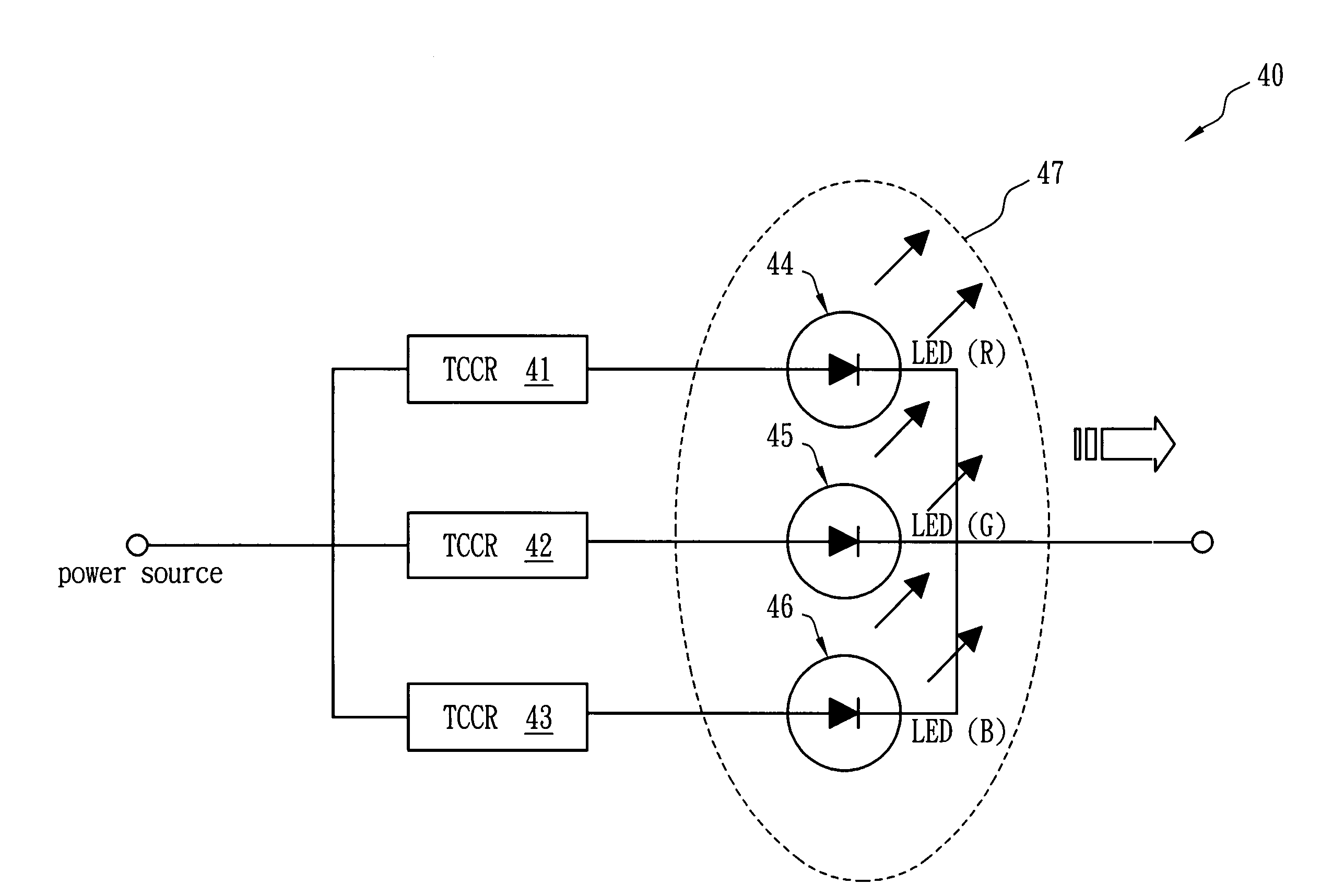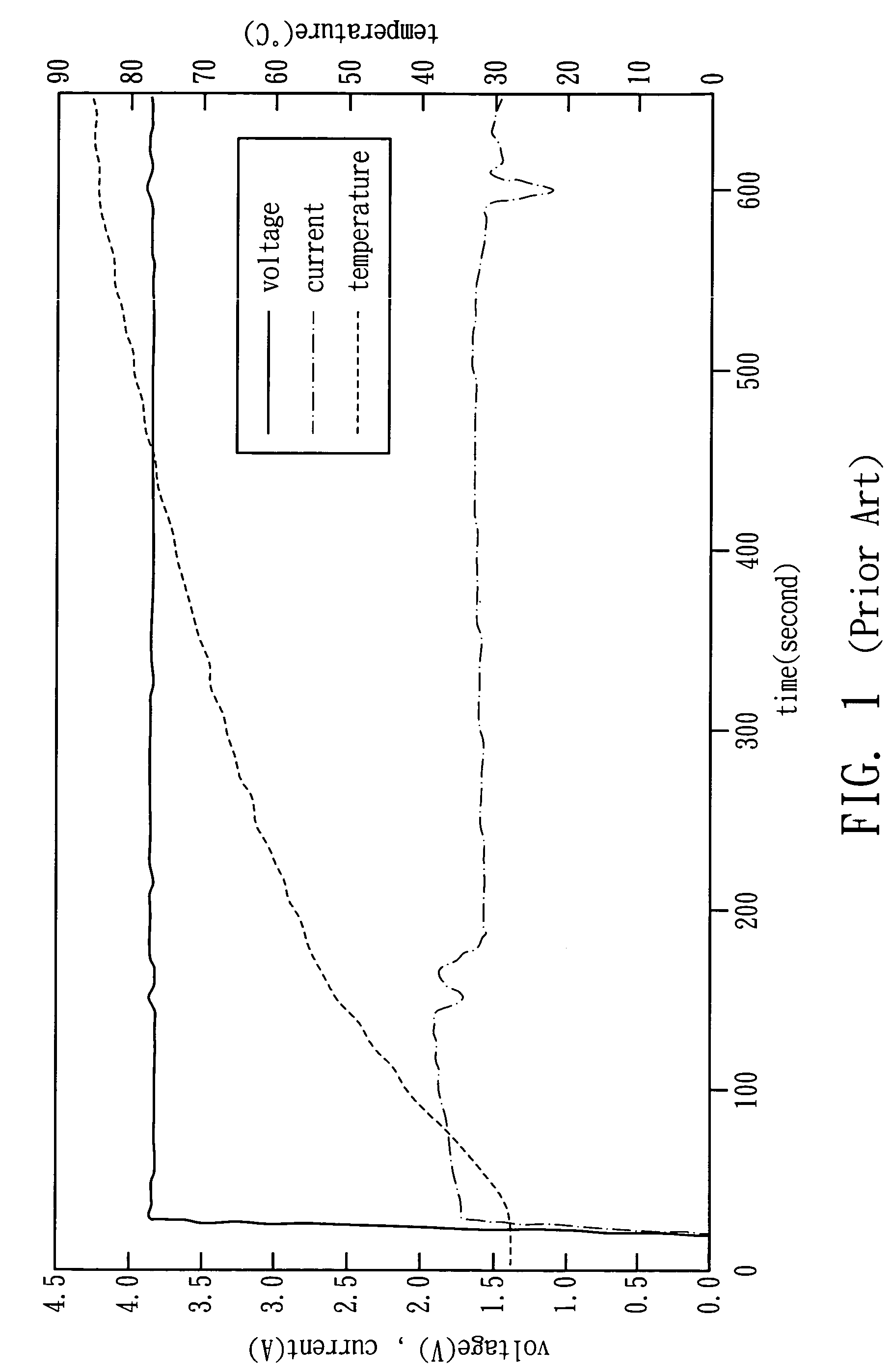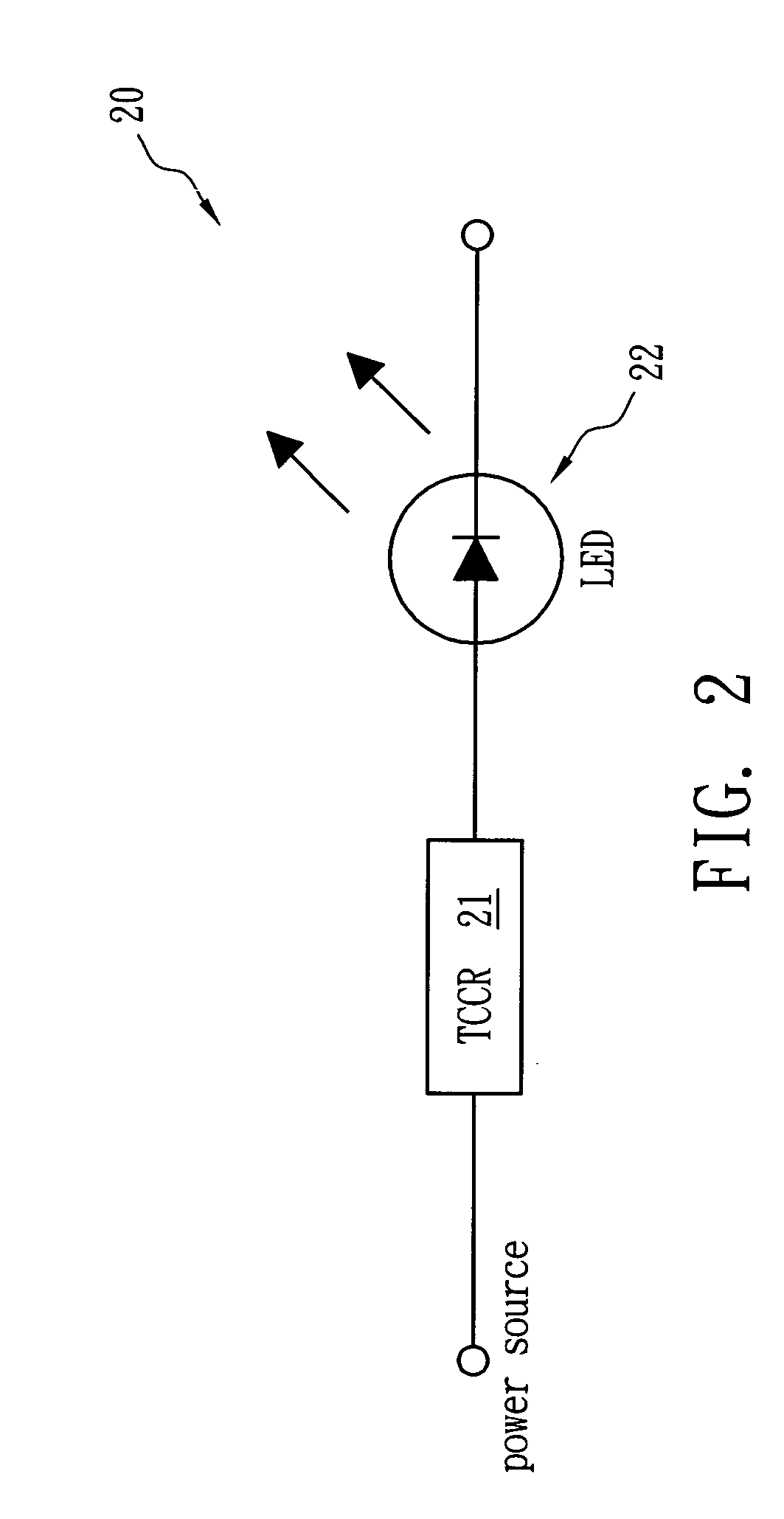Light emitting diode apparatus
a technology of light emitting diodes and led dies, which is applied in the direction of electric variable regulation, process and machine control, instruments, etc., can solve the problems of affecting the light emitting intensity and affecting the service life of the led die, and causing overheating, so as to reduce the current flowing through the led die, prevent the led die from damage, and increase the resistance or tccr device accordingly
- Summary
- Abstract
- Description
- Claims
- Application Information
AI Technical Summary
Benefits of technology
Problems solved by technology
Method used
Image
Examples
Embodiment Construction
[0022]Referring to FIG. 2, an LED apparatus 20 of the present invention is formed by connecting a TCCR device 21 and an LED die 22 in series, and the interval between the TCCR device 21 and the LED die 22 is smaller than an effective sensing distance (e.g., 3 cm), such that the TCCR device 21 can effectively sense the temperature of the LED die 22.
[0023]The TCCR device 21 can be a PTC device, and the relationship between the resistance and the temperature of the TCCR device 21 is shown in FIG. 3. The resistance of the TCCR device 21 before tripping is in direct proportion to the temperature (e.g., 25° C.-85° C.) thereof, i.e., the resistance rises nearly linearly with temperature, and the resistance difference is greater than or equal to 100 mΩ when the temperature is between 50° C. -80° C. The resistance of the TCCR device 21 before tripping rises with temperature, so that when the temperature of the serially connected LED die 22 rises while emitting light, the TCCR device 21 will ...
PUM
 Login to View More
Login to View More Abstract
Description
Claims
Application Information
 Login to View More
Login to View More - R&D
- Intellectual Property
- Life Sciences
- Materials
- Tech Scout
- Unparalleled Data Quality
- Higher Quality Content
- 60% Fewer Hallucinations
Browse by: Latest US Patents, China's latest patents, Technical Efficacy Thesaurus, Application Domain, Technology Topic, Popular Technical Reports.
© 2025 PatSnap. All rights reserved.Legal|Privacy policy|Modern Slavery Act Transparency Statement|Sitemap|About US| Contact US: help@patsnap.com



